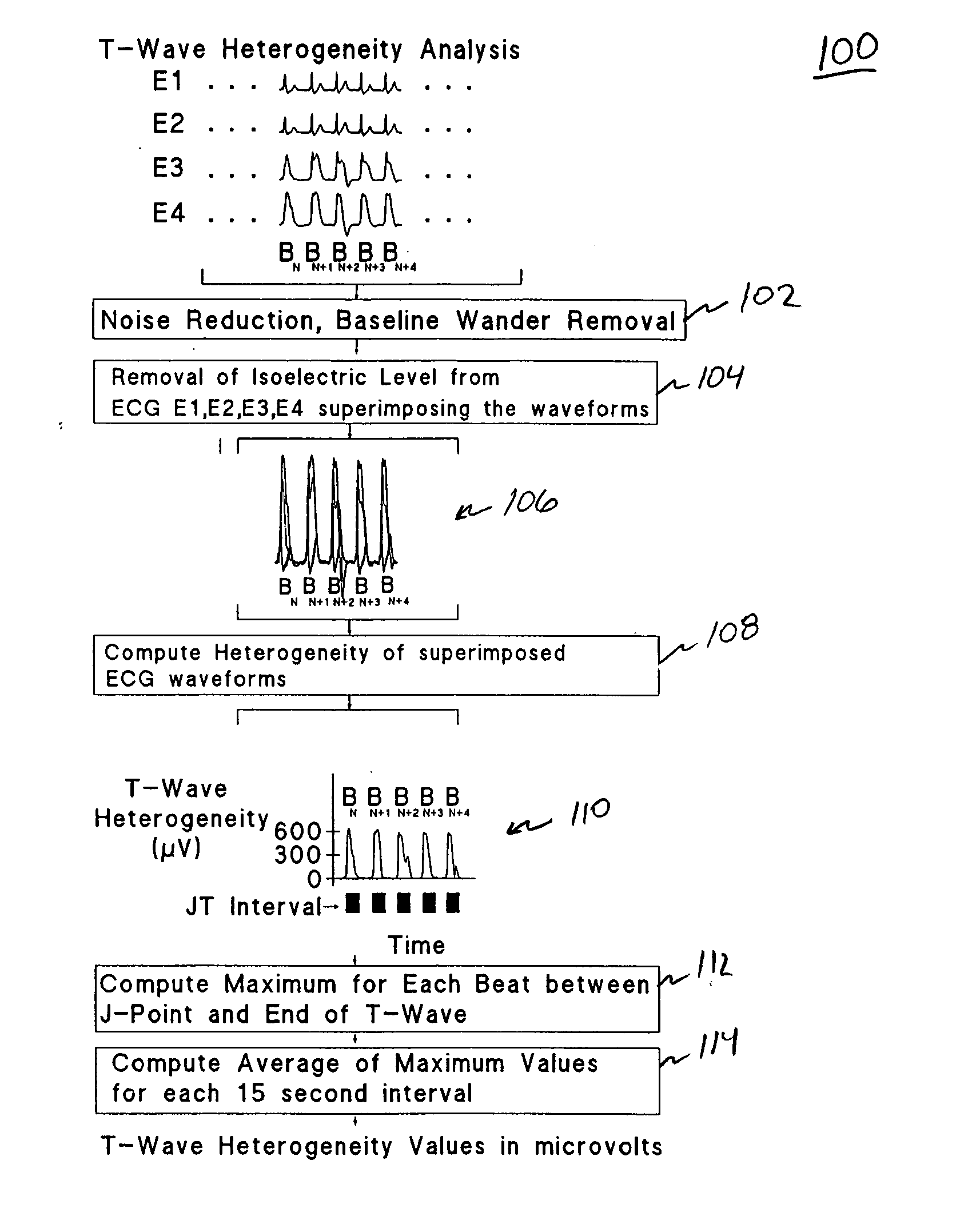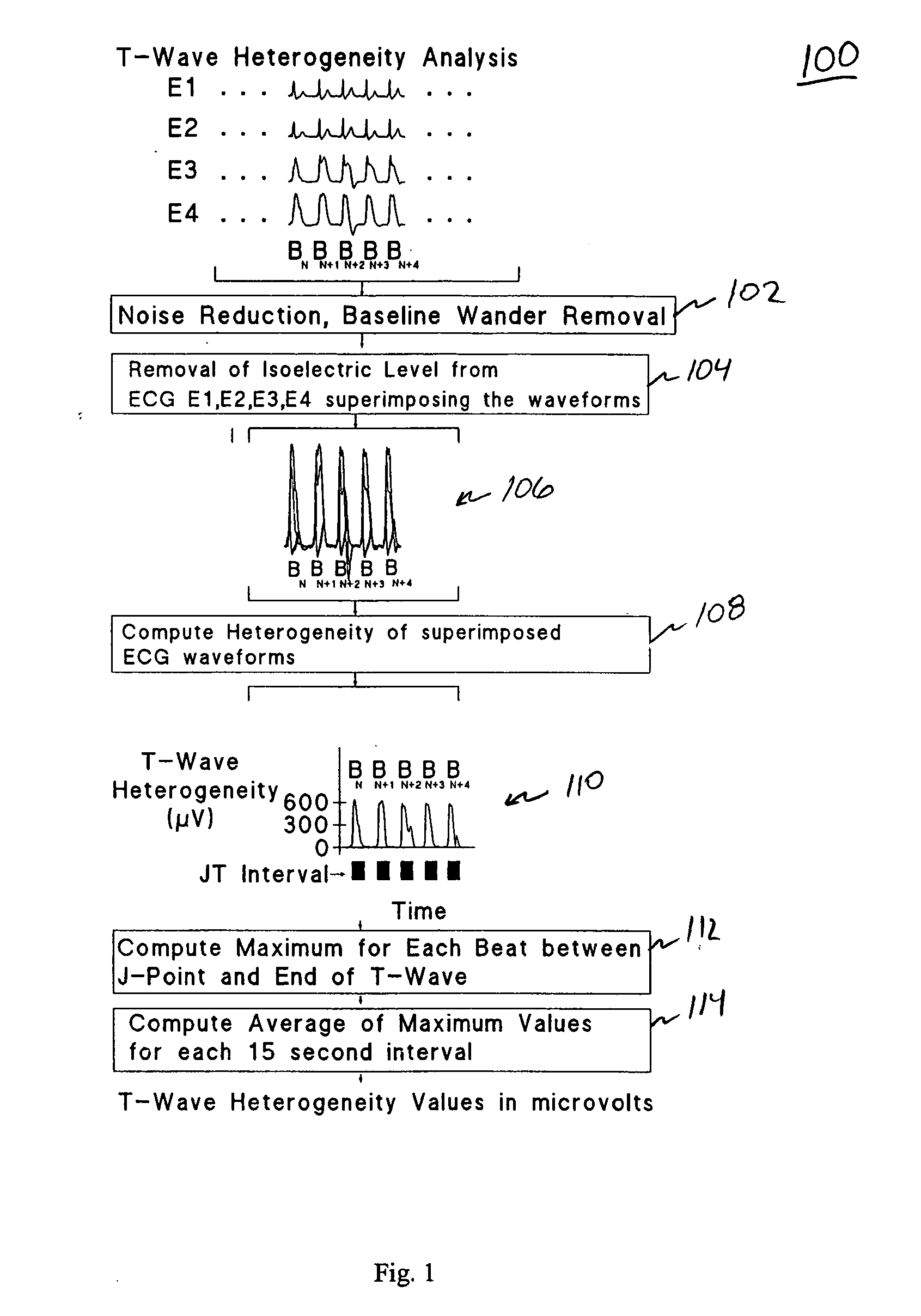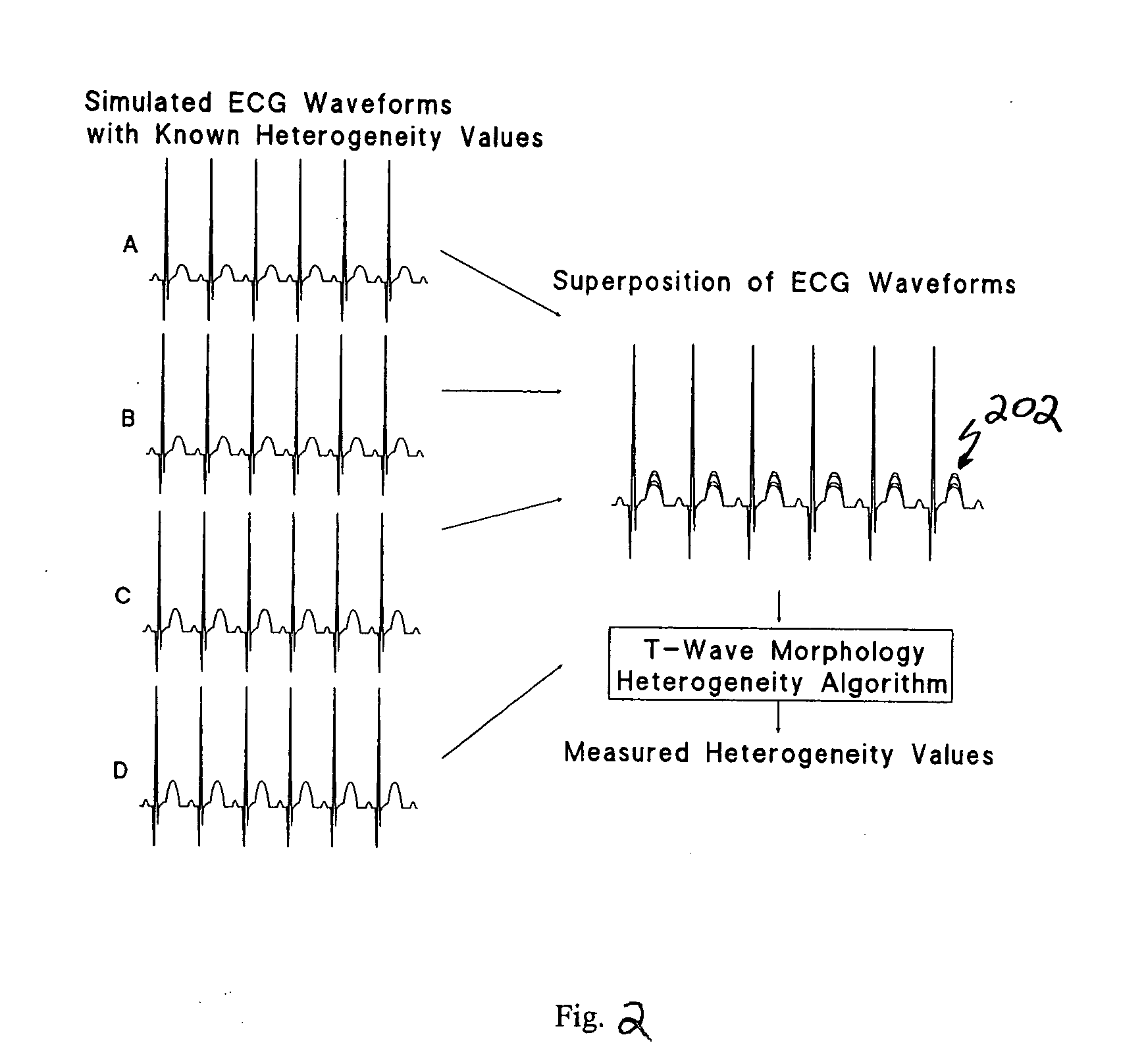Spatial heterogeneity of repolarization waveform amplitude to assess risk of sudden cardiac death
a repolarization waveform and amplitude technology, applied in the field of cardiac disease, can solve the problems of limited body of information on twa levels and surprising little is known about electrophysiologic basis
- Summary
- Abstract
- Description
- Claims
- Application Information
AI Technical Summary
Benefits of technology
Problems solved by technology
Method used
Image
Examples
Embodiment Construction
While specific configurations and arrangements of the invention are discussed herein, it should be understood that this is done for illustrative purposes only. A person skilled in the relevant art will recognize that other configurations and arrangements can be used without departing from the spirit and scope of the present invention.
Just prior to onset of ischemia-induced VF, there is a progressive increase in the complexity of T-wave oscillations that heralds the onset of the arrhythmia. The oscillations escalate from the ABAB pattern of TWA to tripling (ABCABC) or quadrupling (ABCDABCD) patterns that lead abruptly to more complex oscillatory T-wave forms and VF. Episodes of discordant TWA, with alternation out of phase in neighboring epicardial sites, frequently antecede VF.
Based on this finding, the inventors postulated that complex T-wave oscillations and discordant TWA reflect states of heightened spatial heterogeneity of repolarization. To test this hypothesis, the inven...
PUM
 Login to View More
Login to View More Abstract
Description
Claims
Application Information
 Login to View More
Login to View More - R&D
- Intellectual Property
- Life Sciences
- Materials
- Tech Scout
- Unparalleled Data Quality
- Higher Quality Content
- 60% Fewer Hallucinations
Browse by: Latest US Patents, China's latest patents, Technical Efficacy Thesaurus, Application Domain, Technology Topic, Popular Technical Reports.
© 2025 PatSnap. All rights reserved.Legal|Privacy policy|Modern Slavery Act Transparency Statement|Sitemap|About US| Contact US: help@patsnap.com



